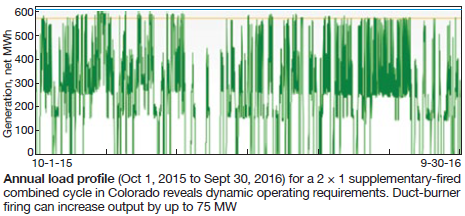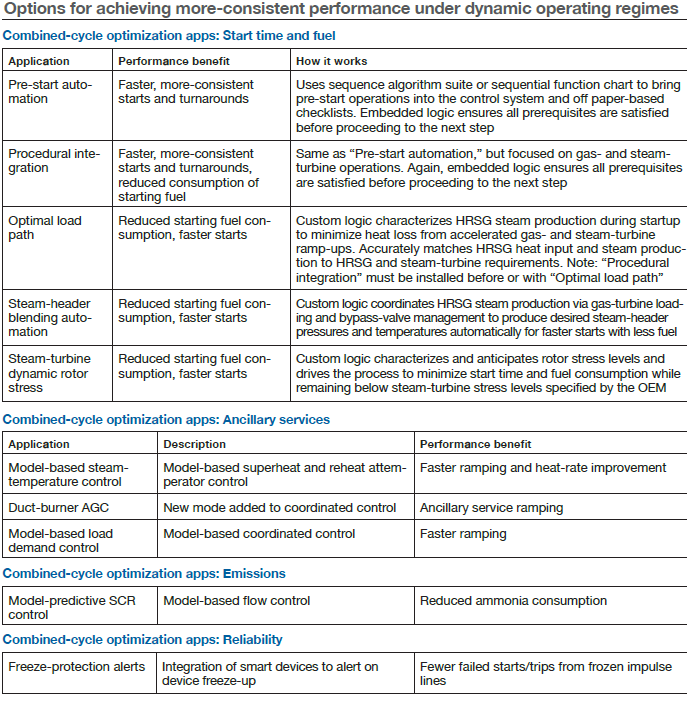To paraphrase a famous quote from the political arena, a dollar here, a dollar there, pretty soon you’re talking about real money. And so it is with automating combined-cycle startup procedures. It doesn’t take a genius to realize that the more times you start up the unit, the more opportunities you have to avoid losing money. And who isn’t experiencing more unit starts these days?
 If you still rely on manual startups with sign-off paper sheets, you are probably wasting fuel. Similarly, starts spread among different operators with different preferences and understandings of the boundaries around hot, warm, and cold starts can also lead to inconsistent performance. In other words, the more dynamic the operating modes are day-to-day, hour-to-hour, the more chances there are of losses from inconsistent and out-of-date procedures.
If you still rely on manual startups with sign-off paper sheets, you are probably wasting fuel. Similarly, starts spread among different operators with different preferences and understandings of the boundaries around hot, warm, and cold starts can also lead to inconsistent performance. In other words, the more dynamic the operating modes are day-to-day, hour-to-hour, the more chances there are of losses from inconsistent and out-of-date procedures.
Jeff Williams, Emerson Automation Solutions, Power & Water, speaking at the 2017 7F Users Group conference in San Antonio, provided a laundry list of options offered for his company’s Ovation™ platform to optimize combined-cycle operations by automating manual procedures, along with a few concrete examples of the monetary benefits to owner/operators.
Regarding the latter:
- A southern US utility reduced fuel use by 54% over 55 starts and 290 load transitions, saving over $1-million in a year.
- A mid-Atlantic utility reduced fuel use by 26% over 50 starts, saving $250,000 annually.
Most recently installed facilities likely have a high degree of startup automation built into their controls. So the options up for consideration (table) are probably more relevant to older facilities originally designed for more stable operating regimes—such as baseload.
For example, according to Williams, what is “visible” at these plants are the number of starts from zero, the number of gas-turbine starts, capacity factor, heat rate, and minimum and maximum load points. What typically isn’t so visible are the fuel use per start, time to start, starting reliability, dispatch time lost to starting, and AGC (automatic generation control) capability.
Extracting the added performance and revenue requires two things. First, the right metrics have to be installed. These include fuel used during hot, warm, or cold starts for your combined-cycle configuration; fuel used during load transitions and HRSG steam blending into the main header; instantaneous gas-turbine heat rate and overall plant heat rate; auxiliary (parasitic) megawatt-hour use; and fuel used during shutdown. These metrics are then used to generate reports and establish different plant operating profiles.

Second, you need to essentially convert your written start, transition, and shutdown procedures into live screens, or sequence function charts, in the control system. Tasks, steps, and actions are then shown in real time, with options for the operator to abort, hold, switch to manual, or override.
Other benefits from more consistent starts, shutdowns, and transitions include:
- Reduce stresses on equipment—such as less variance in steam temperature through model-based control, and less dynamic stress on spray valves. Up to a 50% reduction in steam-temperature variation is possible, as well as 50% reduction in spray-valve movement and water flow.
- Minimize maintenance factors on gas turbines caused by balance-of-plant upsets.
- Detect problems with fuel system components, instruments, and other devices before a startup sequence is initiated—especially important as the time period between starts increases.
- Avoid issues with optimizing operations under seasonal temperature variations.
- Reduce reagent consumption to meet emissions limits under dynamic operating conditions.
- Universal access and visibility of procedures and performance under dynamic operating regimes.
Although today’s plant load profiles can be quite dramatic (figure), shocking even, most forecasts point to even greater variability in operating regimes in the near future, as combined cycles are called upon to fill in around fuel-free renewable energy capacity and locational marginal prices decline. The plant represented by the figure is a 2 × 1 combined cycle with enough HRSG duct-burner capacity to add 75 MW of steam turbine/generator output when necessary.
Williams’ presentation can be accessed by users registered on the 7F Users Group website at 7Fusers.org. CCJ




